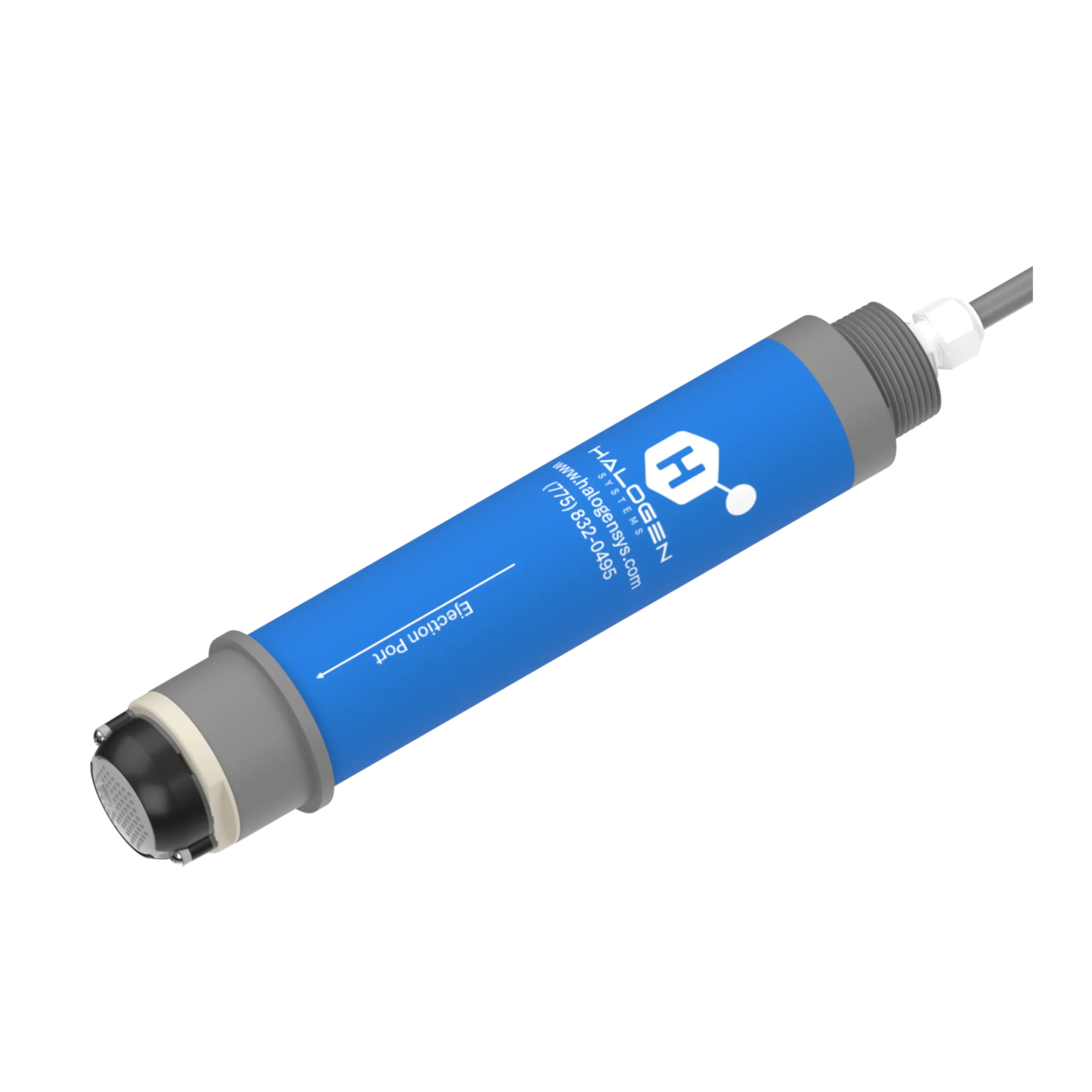MP5 Multiparameter Chlorine Sensor
- Home
- Muliparamter Chlorine Sensor
MP5-A Multiparameter Free Chlorine Analyzer for Drinking Water
This is our most versatile and popular sensor. This amperometric sensor measures chlorine along with pH, conductivity, temperature, and ORP. It utilizes bare electrodes without membranes and is self-cleaning, allowing for long intervals between calibrations. It is ideal for many applications. It is low-maintenance, flow-independent, and both temperature- and pH-compensated. All Halogen Sensors are NSF-61 certified for safe exposure to drinking water.

Why you need it:
If you measure Free Chlorine in your drinking water system and want to save 70,000 gallons of water and thousands of dollars in reagents and labor, you need the MP5-A sensor from Halogen Systems, Inc.